While historically high new and used car prices have forced buyers to look for "older" vehicles that may have aged well as a way of saving money, the issues of reliability and dependability have become even more crucial.
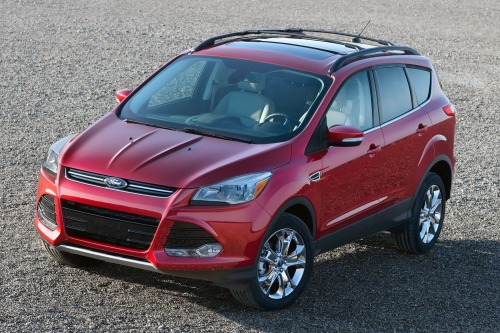
And in terms of the Ford Escape, it has generally received average to above-average reliability scores. And interestingly enough, its second generation (2008 - 2012) is actually considered more reliable than its third (2013 - 2019). So, depending on total mileage, in this case older may actually be better than newer at times.
History has demonstrated that pre-2013 versions and hybrid models can last up to 300,000 miles when well-maintained, while those after 2013 often top out in the 200,000 mile range.
So here, ...
- We'll do an overview of some earlier Ford Escape generations, specifically those covering the 2001 - 2019 model years.
- Then we'll list possible mechanical issues that have been reported by some owners so they can be checked before buying one today.
- And then we'll summarize the overall pros and cons of an older Escape worth consideration for potential buyers today.
But first, and very importantly ...
Things To Do When Considering An "Older" Vehicle
Locate Lower Mileage Vehicles: They are certainly out there to be found with careful and patient shopping. Be willing to drive a distance if you have to.
Vehicle History and Maintenance: Ask for the vehicle history report (CarFax or AutoCheck) as well as documented maintenance and repair records. If not provided by the Dealer or private seller, it's usually best to move on.
Pre-Purchase Inspection: Have the vehicle independently inspected before making a final decision. This usually will cost in the $150-$200 range but is well worth it given the potentially thousands in savings over the long term.
Also, Always Know The Value Of Your Trade-In!
Whether you are trading or selling on your own, it's just a good idea ... even whether you are in the market or not at the moment. You can then use this important information for a number of purposes ... to negotiate with a dealer, or to know how to price your car in the retail market, or simply to know the value of one of your assets, which is always a good idea.
Getting trade-in values online tend to vary a lot from site to site. But I've found the one at Edmunds Trade-In Quotes is particularly comprehensive and accurate. It's free, it's quick and there's no contact by any third parties. I think what helps its accuracy is the inputs will include either your plate# or VIN#. They really focus in on the specific vehicle.
Third Generation Ford Escape (2013 - 2019)
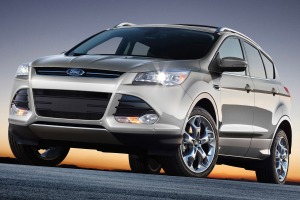
This generation marked a significant redesign from its predecessor, showcasing a more modern and sleek appearance with a more aerodynamic design. It had a more prominent grille, sleek headlights, and a streamlined body shape.
The interior received updates with improved materials and a more ergonomic layout. It offered comfortable seating and a well-designed dashboard with user-friendly controls and was equipped with various technological features, including Ford's SYNC system for infotainment, available touchscreen displays, smartphone integration, and advanced safety features like blind-spot monitoring, lane-keep assist, and adaptive cruise control.
And it offered a range of engine options built for enhanced performance and fuel efficiency, including a base 2.5-liter four-cylinder engine, a 1.6-liter turbocharged EcoBoost, and a more powerful 2.0-liter turbocharged EcoBoost engine, while also being available in both front-wheel drive (FWD) and all-wheel drive (AWD) configurations.
Ford offered several trim levels for the third-gen Escape, with varying features and options. These typically included S, SE, SEL, and Titanium trims, with higher trims offering more advanced features and technology.
Over its production run, the third-generation Ford Escape saw several updates and changes that aimed to improve performance, features, and overall appeal. The biggest change for 2017 was the discontinuation of the 1.6-liter EcoBoost engine option, leaving the 1.5-liter EcoBoost and 2.0-liter EcoBoost engines available. Also, the SYNC 3 infotainment system became standard on upper trim levels, offering improved functionality, faster response times, and better compatibility with smartphones.
Car Buying Tips:
Do This For The Best Trade-In Price
The Truth About Wholesale And Trade-in Values
How To Get The Lowest Rate Car Loan
For 2018, Ford introduced a new SEL trim level, which offered a blend of features from the SE and Titanium trims. It also received received a minor exterior refresh, including revised front and rear styling, updated grille designs, and new wheel options.
Then for 2019, Ford added a new trim level, the SE Sport Appearance package, which included unique styling elements like blacked-out exterior trim and sporty accents. Also, the 1.5-liter EcoBoost engine received a slight power boost, providing a bit more horsepower and torque.
Overall, throughout these years, there were continuous improvements in software updates for the infotainment system, refinements in safety features, and minor tweaks to interior and exterior styling. However, the fundamental structure and offerings of the Escape remained consistent over this generation.
2013 - 2019 Ford Escape Possible Mechanical Problems
The third generation Escape has generally been about average when it comes to reliability. Reported issues or common problems that should be checked prior to buying include:
Transmission Issues: Some drivers reported issues with the transmission, such as rough shifting or transmission slipping. This was particularly associated with the dual-clutch automatic transmission in earlier model years. Ford issued software updates and made improvements to address these concerns.
Coolant Leaks: Instances of coolant leaks have been reported in some third-gen Escapes. These leaks could stem from various sources, including hoses, radiator, or the water pump. Regular coolant system inspections are recommended.
Electrical Problems: Complaints about electrical issues, including malfunctioning sensors, power window failures, or infotainment system glitches, have been noted by some owners. These issues might arise due to wiring problems or software bugs.
Engine Stalling/Stuttering: A few owners reported instances of the engine stalling or experiencing a stuttering sensation during acceleration. These concerns could be related to engine sensors, fuel system problems, or ignition issues.
Brake Problems: There were occasional reports of brake system issues, including premature wear on brake pads or problems with the brake calipers.
It's important to note that not all vehicles will experience these issues, and many owners have had trouble-free experiences with their third generation Escapes.
Second Generation Ford Escape (2008 - 2012)
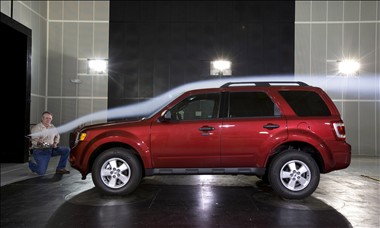
The second generaton Escape consisted of three models: XLS, XLT and Limited (all available with either front-wheel or all-wheel drive). Each model is equipped with progressively more standard features.
It's likely that a majority of drivers would be satisfied with the XLT which has standard features such as full power accessories, 16-inch alloy wheels, air-conditioning, cruise control, a power driver seat, automatic headlights, foglights, keyless entry, upgraded upholstery, privacy glass, a CD player and an auxiliary input jack.
Older used Escape shoppers should be aware that there were some significant upgrades beginning with the 2009 model. The Escape got more powerful engines, a new six-speed automatic transmission and a more athletic suspension tuning for improved handling.
The four-cylinder was increased in size to to 2.5-liters (from 2.3) to produce 170 horsepower, while adjustments to the 3.0-liter V6 boosted output to 240 horsepower. In addition, a new six-speed automatic transmission also enhanced performance while increasing its fuel economy by 1 -2 mpg.
The new four-cylinder, six-speed automatic with front-wheel drive was rated at 20 mpg city and 28 mpg on the highway. With all-wheel-drive, gas mileage came in at 19 city and 25 highway. The front-wheel-drive V6 model gets an estimated 18 city and 26 highway, while the AWD V6 comes in at 17 and 24, respectively.
2009 also saw the addition of a capless fuel filler and Ford's Sync system (voice activation of audio, phone and navigation systems). Antilock brakes and cruise control also became standard on all models, as opposed to only the higher trims, while being optional on the others.
The 2010 model got a new driver-side mirror that improved blind spot visibility. Heated seats became standard on the Limited, while some of these models can now be found with new options such as a rearview camera, an automatic parallel-parking system and MyKey (allows parents to limit speed and sound system volume for teen drivers).
There were only some minor feature revisions for 2011, but MyKey became standard on all trims. In 2012, the Escape was essentially unchanged.
Also introduced was a Ford Escape Hybrid, although harder to find now, that comes in base and Limited models that's equipped with a gasoline/electric powertrain that was ranked among the top fuel efficient SUVs at the time (up to 34 mpg city and 31 highway).
2008 - 2012 Ford Escape Possible Mechanical Problems
The second-generation Ford Escape has had a few reported issues and common problems that some owners encountered that therefore should be included in an inspection before buying one today:
Transmission Issues: There were occasional reports of transmission problems, including rough shifting, transmission slipping, or hesitation during gear changes.
Stalling or Surging Engines: Some owners experienced issues with the engine stalling or surging unexpectedly. These concerns could be related to faulty engine sensors or fuel system problems.
Hybrid Battery Concerns (Hybrid Models): The Escape Hybrid variant had issues related to the high-voltage battery, which could sometimes lead to reduced efficiency or battery failure. Replacement of the hybrid battery can be costly.
Brake Problems: There were occasional complaints about premature brake wear or problems with the braking system. Some drivers reported the need for frequent brake pad replacements or issues with the brake calipers.
Electrical System Issues: Instances of electrical system problems, such as malfunctioning sensors, power window failures, or dashboard instrument cluster issues, were reported by some owners.
It's important to note that not all vehicles of this generation experienced these problems, and many owners had positive experiences with their second generation Ford Escapes. Routine maintenance, and addressing any concerning symptoms promptly may have helped prevent more significant problems from developing in most vehicles.
First Generation Ford Escape (2001 - 2007)
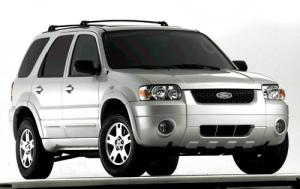
The first generation Escape was Ford's first SUV built on a car platform, resulting in an SUV with good maneuverability, easy car-like driving and quite respectable gas mileage (18 - 23 mpg city and 23 - 28 mpg highway depending on the engine).
It says a lot that when first introduced, the Escape quickly became one of top selling small SUVs in the country. And this was no small feat given the intense competition in this segment, many of which were already well established.
This vehicle offers a nice combination of attractive styling and available four-wheel-drive versatility with the practicality and pleasant driving experience of a midsize sedan. It should be noted, however, that as a compact four-door SUV with a fully independent suspension, unibody construction and a light-duty all-wheel-drive system, the Escape is best used for on-road driving as opposed to off-road.
The Escape's basic exterior and interior design remained the same through the 2007 model year and was available in XLS, XLT, XLT Sport and Limited trims.
The leather-appointed Limited model was introduced in 2003. From 2001 to 2004, the base engine for this Escape was a 2.0-liter four-cylinder that produced 130 horsepower. It was later replaced with a more robust 2.3-liter inline four-cylinder that delivered 153 horsepower and was offered until 2008. From 2001 to 2007, the optional V6 engine produced 200 horsepower and was mated with a four-speed automatic transmission.
2001 - 2007 Ford Escape Possible Mechanical Problems
The first generation Ford Escape generally had a reputation for being a reliable vehicle. However, there were some reported issues and common problems that owners have encountered that should be checked prior to purchase today:
Transmission Issues: Some owners experienced problems with the automatic transmission, such as rough shifting, transmission slipping, or hesitation during gear changes.
Rust Problems: Some Escapes from this generation were reported to have issues with rust, particularly in regions where road salt is used during winter. Areas prone to rust included the wheel wells, rear liftgate, and undercarriage.
Hybrid Battery Concerns: The Escape Hybrid variants had concerns related to the high-voltage battery, which could lead to reduced efficiency or eventual battery failure. Replacement of the hybrid battery can be very expensive.
Engine Stalling or Misfiring: A few owners reported instances of the engine stalling or misfiring, potentially due to problems with engine sensors or fuel system issues.
Electrical System Issues: Similar to later generations, there were occasional complaints about electrical system problems, including malfunctioning sensors, power window failures, or dashboard instrument cluster issues.
Overall Pros And Cons Of An Older Ford Escape
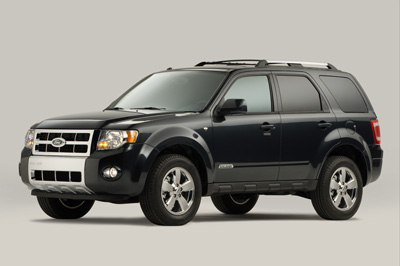
Older Ford Escape Pros
Lower Purchase Price: Older models generally have a significantly lower upfront cost compared to newer used cars, allowing potentially significant savings upfront.
Depreciation: Older vehicles have already undergone a significant portion of their depreciation, so there won't be an initial steep drop in value after purchase.
Lower Insurance Costs: Generally, insurance premiums for older vehicles tend to be lower compared to newer models, contributing to ongoing savings.
Ease of Maintenance: Older cars often have simpler mechanical systems, making maintenance and repairs more straightforward and potentially less expensive.
Generous Cargo Room: Older Escapes often offer ample cargo space, especially when the rear seats are folded down, making them versatile for hauling items.
Comfortable Seating: Generally, the Escape has comfortable seating for passengers and good headroom and legroom, making longer trips more pleasant.
Smooth Ride: Older Escapes tend to offer a smooth and comfortable ride, particularly on highways and city roads.
Good Handling: They often have responsive steering and handling, making them maneuverable in various driving conditions.
Decent Fuel Efficiency: Older Escapes typically offer reasonable gas mileage for their class, especially with the four-cylinder engine.
Quiet Cabin: They often provide a relatively quiet cabin, which enhances the overall driving experience.
Older Ford Escape Cons
Potential Reliability Issues: Older vehicles may be more prone to mechanical problems and breakdowns due to age, wear, and potentially outdated technology.
Higher Mileage: Older vehicles might have higher mileage, leading to potentially sooner and more significant repairs.
Outdated Technology: Older models might lack modern features and technology found in newer vehicles. This could include safety features, infotainment systems, and fuel efficiency advancements.
Limited Third-Row Space: Some older Escapes might lack a third-row, limiting passenger capacity compared to larger SUVs.
Aging Interior Design: Older models might have outdated interior designs compared to newer vehicles, impacting aesthetics and practicality.
Less Fuel-Efficient Than Newer Models: While decent, older Escapes might not match the fuel efficiency of newer SUVs with more advanced engine technology.